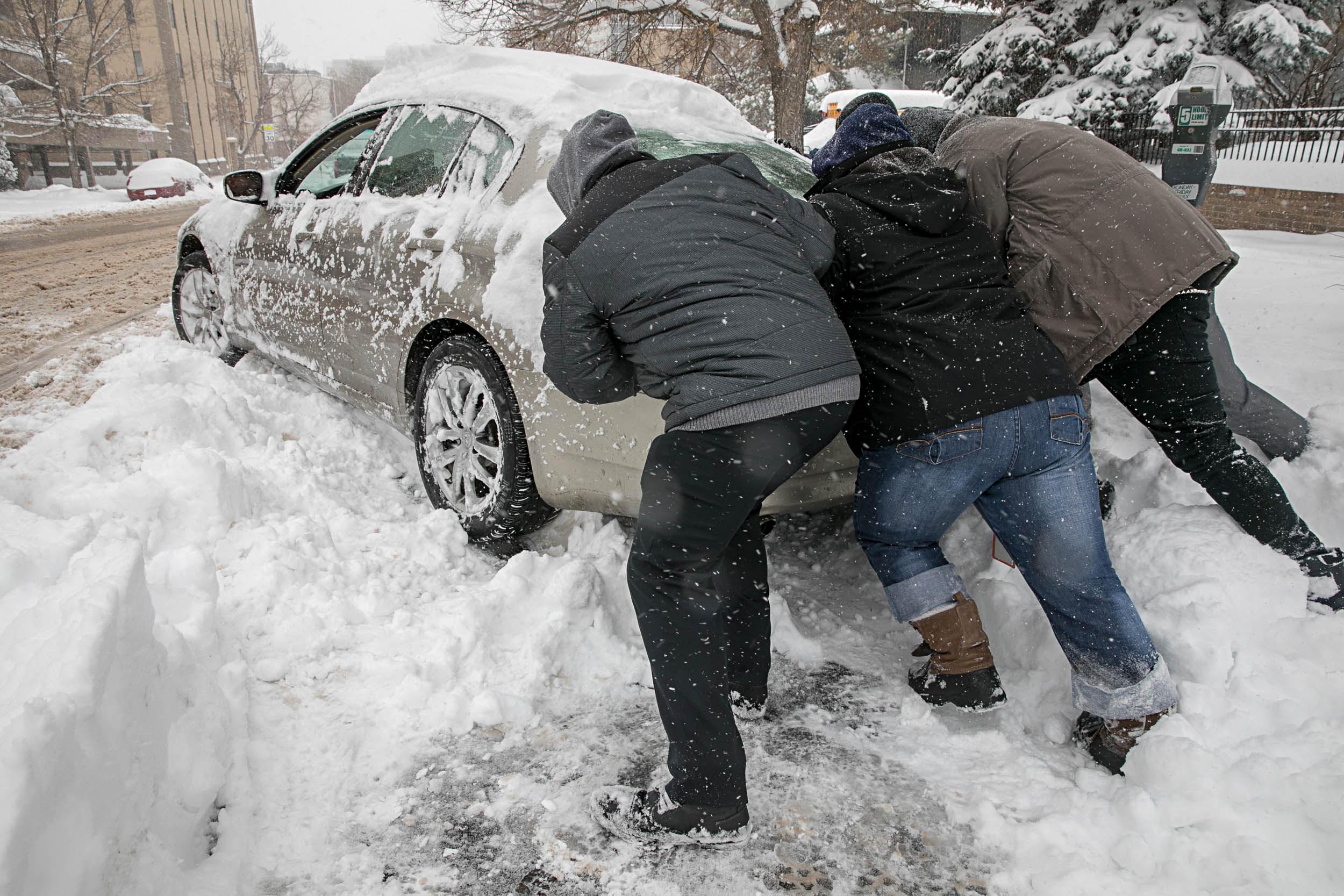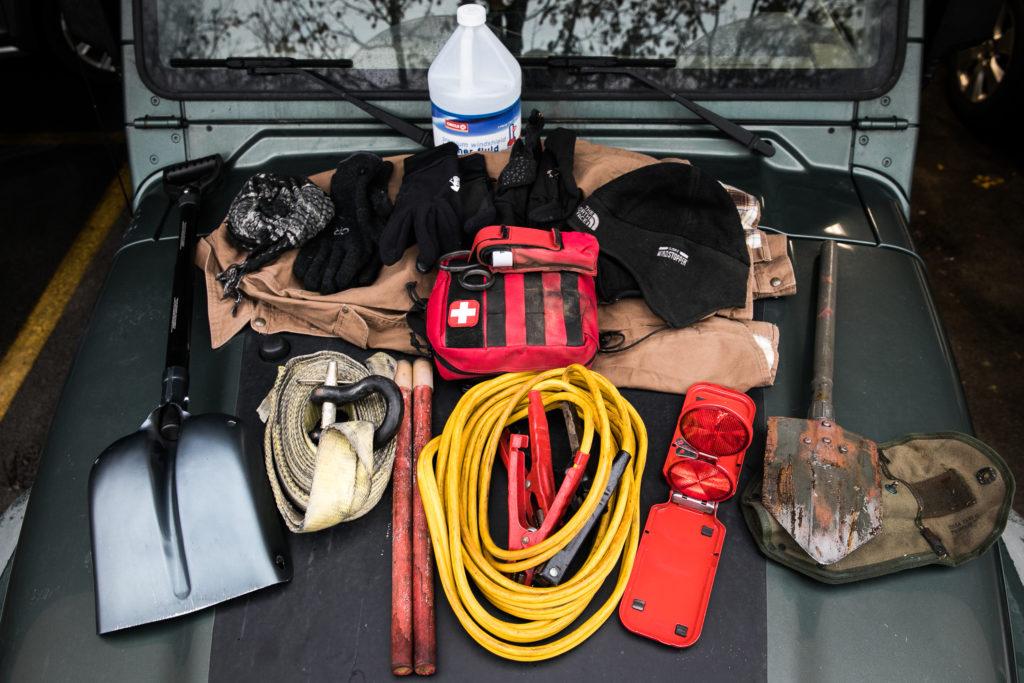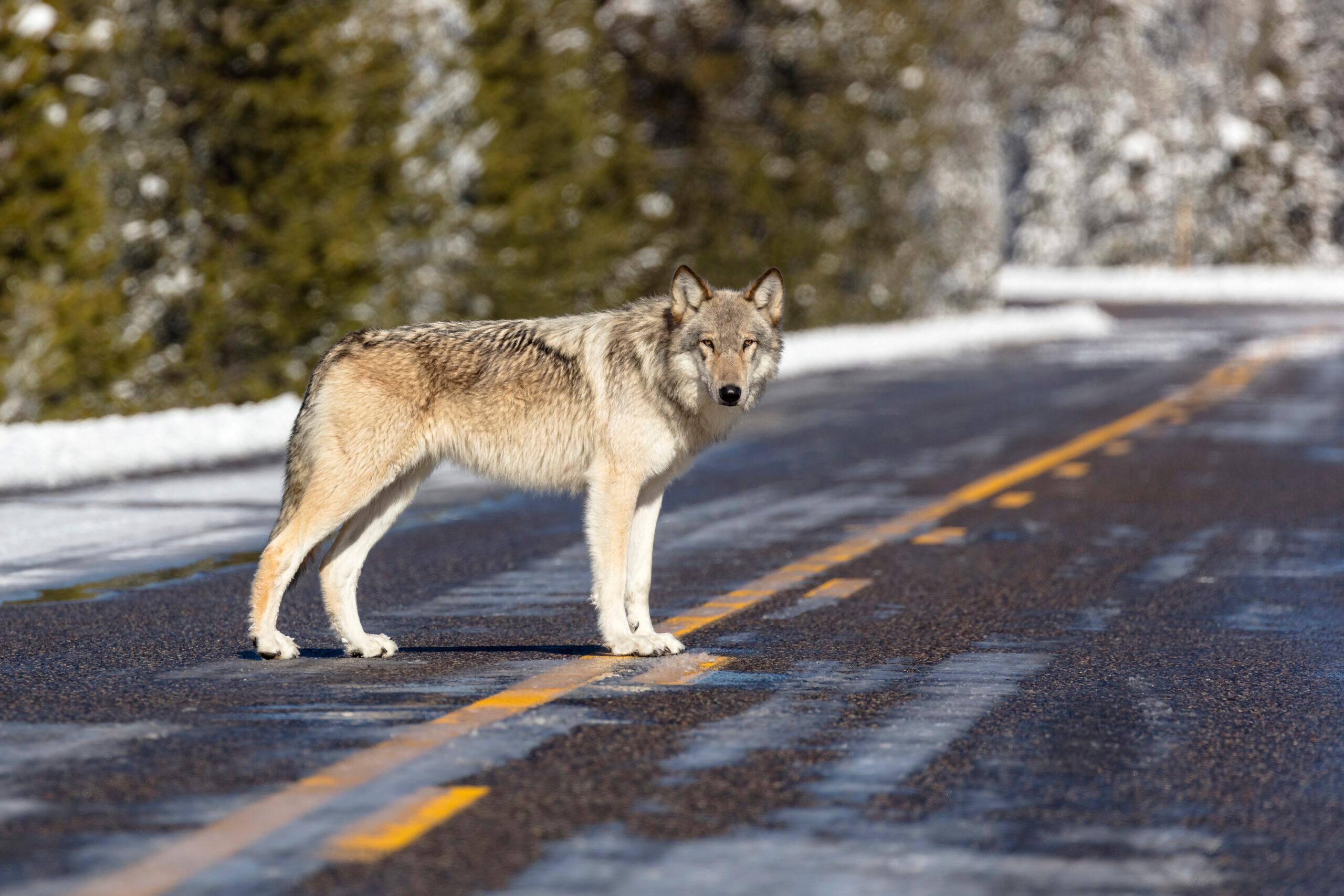
The first, best advice when it comes to driving in a winter storm is: don't do it. But sometimes it can't be helped, and then it's important to have what you need in case things go wrong.
Even if you're studied up and sure you have the driving skills necessary to tackle snowy and icy roads.
Take the late-November snowstorm that pummeled the Front Range in 2019 and, a few days later, left hundreds stranded in the South Park valley. The Jefferson County Sheriff's Office sent its Snowcat out to rescue stranded motorists — and saw many more abandoned vehicles along the way.
Sometimes there's no amount of preparation that can keep you from getting stuck, says Jefferson County Sheriff's Office Public Information Officer Mike Taplin.
"That was more of a Mother Nature situation."
When roads close due to weather (or accidents), it can take time for emergency responders to get to stranded motorists and it's important to have some supplies to make it through that time.
"We so often see people traveling without water, blankets or snacks in their car," says Stacia Sellers, spokeswoman for the Colorado Department of Transportation. "A lot of people may think that they'll just eat when they get to wherever they're going, but if you do get stuck in a long term closure, it's important that you stay hydrated and stay alert and energized."
Whether you try to dig out or stay put and wait for rescue, preparedness is the key to safety — and, Taplin says, "Safety is paramount."
Before you go
Even when the weather isn't that bad, be sure your car is up-to-date and properly equipped to handle the roads safely. And it's just as important to load it with things to keep yourself safe and healthy when the need arises.
Make sure your vehicle is prepared
- Make sure your tire pressure and tread condition are adequate — and you have the right tires (always have a tire pressure gauge in your car).
- If traveling in the mountains, know and be sure you meet Colorado's traction law requirements.
- Check the condition and fit of your tire chains, and be sure you know how to put them on.
- Keep gas in the tank: Fill up before expected storms and stop often if traveling in bad weather; never get below half a tank if possible.
- Test your heater and defroster to be sure they work correctly.
- Inspect your wipers and replace them often if needed (Colorado sun breaks them down quickly!).
- Fill up that washer fluid — and keep a spare jug in the trunk.
- Ensure general maintenance is up to date on your car, such as lights, ignition, etc. — aging batteries are especially susceptible to failure in the bitter cold.
- Double-check on the presence and condition of your spare tire, jack and lug wrench.
Make sure you are prepared
- Let someone know your route and destination, and your departure and anticipated arrival times.
- Check road conditions in advance — traffic and mapping mobile apps, news websites, radio reports and especially CDOT's interactive maps on cotrip.org can carry critical information for drivers.
- Make sure your phone is fully charged. Carry a backup battery if you can, and make sure it's also charged.
- Dress appropriately for the weather (which, in Colorado, means LAYERS, people!).
- Don't drive if you have a bad cold or the flu, which could impair you as much as moderate alcohol consumption.
- It should go without saying, but don't drive in adverse conditions while under the influence of alcohol or marijuana.
- And don't drive sleepy — that's never good, but it's worse on snow and ice.
- Brush the snow off of ALL of your car — don't be that person on the highway with snow on the roof making it impossible for anyone behind you to see!
- If you become stranded, signal distress with a bright cloth tied to an antenna, mirror or roof rack — or use road flares.
- Don't leave your car if you become stranded.
In case you scanned over the tires bit, let's reinforce here that they are the single most important thing for your winter driving safety:
"The number one mistake is driving in winter and blizzard conditions with improper tires," Sellers says. "We so often see roads being closed by motorists driving with bald tires. Not only is it extremely dangerous for the motorist to leave in snow or ice conditions with bald or improper tires, but it also poses a significant risk to others on the roadway."
If you've never driven in winter conditions before, or don't feel comfortable doing it, you could also consider a winter driving course — one of the country's best is in Colorado.

Build an emergency car kit
Let's face it, sometimes things go pear-shaped. There's no offense like a good defense, though, so make sure you've got everything you need to face any contingency. In winter driving that mostly means getting stuck — whether for a minute, for hours, or even for days.
Vehicle safety equipment
- Tow strap (leave tow chains to the pros) — try to get one 20 feet or longer.
- Road flares, or reflective or battery-operated LED markers. Road flares can be a fire hazard, especially in windy conditions — know how to safely use them. Charge or bring spare batteries for LED type.
- Reflective vest — especially in bad weather, other drivers may not be able to see you if you're trying to dig your car out.
- First aid kit. You can buy ready-made ones or build your own.
- Jumper cables. Buy good, heavy-gauge cables with copper conductors — the longer, the better.
- Ice scraper and/or snow brush.
- Shovel or entrenching tool.
- Flashlight with extra batteries.
- Phone charger. Keep one in your car at all times so you can't forget it!
- Non-clumping cat litter, sand, traction mats or other traction aids.
- Some sort of basic tool. A Swiss Army knife or Leatherman-type multitool will work for starters (read on for more about tools).
- Vehicle escape tool, such as Lifehammer, Resqme or similar, with a window breaker and a seatbelt cutter. Be aware some of the newest vehicles use laminated window glass, which could make this less useful.
- Printed maps and compass. If you must leave your vehicle, you should be able to read a map and navigate with a compass, and good old paper still works even when your phone is dead or the towers go down.
Personal safety equipment
- Blanket(s). Heavy wool is best for warmth and still works when wet; reflective or survival type blankets make for good, highly visible outer layers.
- Extra hat, gloves/mittens, jacket, boots. Fleece or wool will generally serve you best.
- Socks. Keep at least one spare pair of wool socks in case yours get wet.
- Chemical hand warmers. Bonus points if your emergency gloves have pockets for them.
- Drinking water — 1 gallon per person, preferably.
- Emergency food. Choose nonperishable, long-lasting things like granola or energy bars.
- Extra prescription medications (keep these in your first aid kit and rotate in fresh ones regularly).
- Cloth or paper towels, toilet paper, hand sanitizer. Let's face it, sometimes nature calls when you're far from any available plumbing.
- Entertainment: cards, book, travel board games — your sanity can get as frost-bitten as your toes if you're stranded a long time.
- Whistle (to call for help).
That last one, the whistle? It can be helpful in some situations, but it might be less useful during winter.
"In winter conditions, especially if it's a blizzard, it's safe to say that others will likely not hear a whistle. It would be a better bet to use your horn or flash your lights if you need to attract attention to your stranded vehicle," CDOT's Sellers says. "Flares work best to attract attention and alert others that you are stranded."
Do you still have room in your emergency bag or trunk? Here are some more things you could consider adding:
- Battery or hand-crank radio.
- Battery booster/jumper box (keep it charged).
- More complete tool kit. We're talking wrenches, pliers, screwdrivers and so one. You can build a kit to fit your car perfectly.
- Electric or battery-powered air pump or, at least, canned tire inflator.
- Small gas can (if you do run out, don't be a hostage to "renting" one from a filling station).
- Fire extinguisher (ABC type).
- Tarp for emergency shelter.
- Extra fluids (coolant, motor oil, etc.).
Lastly, here are a few advanced and D.I.Y. options to prepare yourself and your car for an extended stay on the side of the road in the snow:
- You can try building a candle-powered or similar small heater. Be sure to ventilate the car if you use one.
- You can try fog-proofing your exterior mirrors and window interiors with shaving cream.
- Water filter or other purification methods. If worse comes to worst, you can always melt snow to drink — but you still may want to filter it.
- Emergency fire-starting materials, stored in a waterproof container. You can assemble a basic kit from household items and scraps.
Odds are, if you find yourself forced to drive in a storm, nothing will go wrong if you're careful. But when they do, now you can be prepared for (almost) anything.
Compiled from information provided by Colorado Department of Transportation, Wisconsin Department of Transportation, Colorado State Highway Patrol, Kansas Department of Transportation, Old Farmer's Almanac, AAA, Popular Mechanics, Consumer Reports and Skilled Survival.
Editor's note: This article has been updated to reflect that the Front Range winter snow storm referenced took place in 2019.









